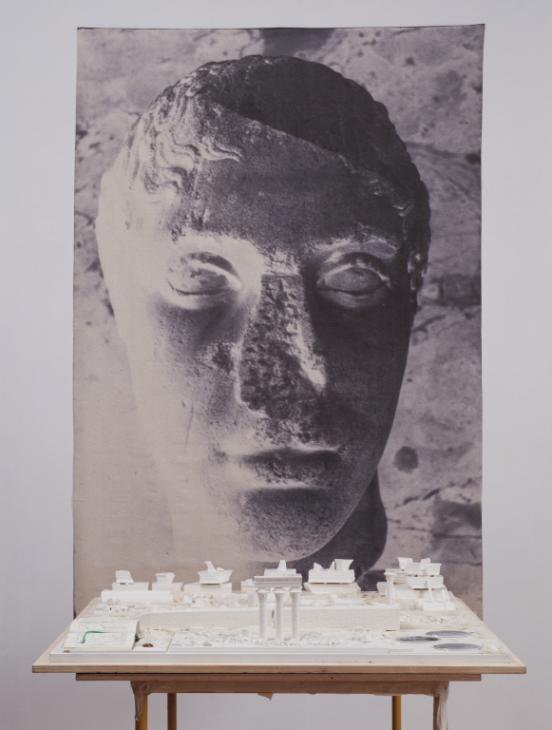Anne and Patrick Poirier are a French art duo whose multimedia works deals with memory, archaeology, disintegration, loss and remembering. While in Berlin in 1977–8 on a German Academic Exchange Scholarship, the artists decided to visit the Villa Adriana, the ruins of the Roman Emperor Hadrian's villa outside Rome, near Tivoli. Hadrian (AD76-138) was Emperor of Rome from AD117–138. Antinous, who was probably born between AD110–12 at Bithynium (Claudiopolis) in North-West Asia was Hadrian’s favourite. He died at about the age of twenty by drowning on an expedition with the Emperor up the Nile. His appearance is known from the many portraits of him that Hadrian subsequently commissioned.
The themes in this installation by the Poiriers are man, nature and mythology. The projected negative photograph which forms part of this piece, shows the head of a statue of Antinous now in the Louvre and is a ghostly presence within the architectural model that has been taken from a French 'Empire' design, a centrepiece of porcelain that was made for Napoleon in 1808. The book attached to the base of the model is Hérodote, Thucydide, Oeuvres complètes, NRF 1964, Editions Gallimard, Paris. The Poiriers also collected a number of rose petals at the villa. The three porcelain plaques placed on the other side of the base from the book are of the sort normally used as commemorative plaques in Italian cemeteries (echoing the theme of Antinous' s death), but instead of the usual texts the artists have had them printed by a transfer process with excerpts from a history of Hadrian and a photograph of the Sphinx at Giza taken from an old travel book.


